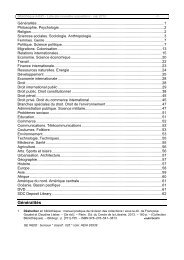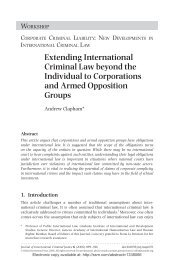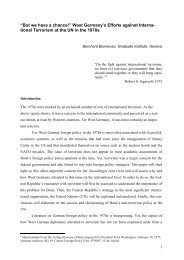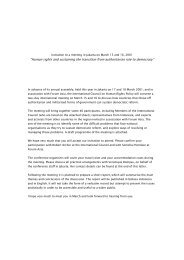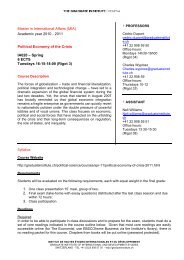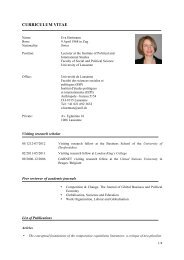Download [pdf] - The Graduate Institute, Geneva
Download [pdf] - The Graduate Institute, Geneva
Download [pdf] - The Graduate Institute, Geneva
Create successful ePaper yourself
Turn your PDF publications into a flip-book with our unique Google optimized e-Paper software.
INDONESIA, Malang: A worker walks in a market warehouse in Malang in East Java province full of freshly harvested cabbages for export to neighboring Association of<br />
Southeast Asian Nations (ASEAN) countries Malaysia and Brunei on 12 December 2012. AFP/Aman ROCHMAN.<br />
will mean in practice and what the end<br />
result could be. On the one hand, there<br />
is willingness to address the problem<br />
of the noodle bowl of preferential trade<br />
agreements through some sort of multilateralisation<br />
of benefits, but on the<br />
other hand, the guidelines for RCEP<br />
state that “the ASEAN + 1 FTAs and<br />
the bilateral/plurilateral FTAs between<br />
and among participating countries will<br />
continue to exist and no provision in<br />
the RCEP agreement will detract from<br />
the terms and conditions in these bilateral/plurilateral<br />
FTAs between and<br />
among the participating countries”.<br />
What seems to be certain is ASEAN’s<br />
willingness to prove its relevance as a<br />
force for integration in the most economically<br />
dynamic region of the world<br />
at a time when further efforts at the<br />
global level are deadlocked. Yet, it faces<br />
competition for its regional centrality,<br />
in particular from the Trans-Pacific<br />
Strategic Economic Partnership (TPP)<br />
launched in 2006 by four small economies<br />
(P4 group), including two ASEAN<br />
members, Singapore and Brunei. This<br />
initiative has since attracted the interest<br />
of bigger economies, in particular<br />
the USA and Australia, but also of two<br />
additional ASEAN members, Malaysia<br />
and Vietnam. Negotiations for a highstandard<br />
agreement (traditional and<br />
“new” trade issues, with efforts toward<br />
regulatory convergence, trade and<br />
investment in innovative industries)<br />
started in 2010 and led to a broad outline<br />
of an agreement in November 2012.<br />
Another competitor has been the Asia<br />
Pacific Economic Cooperation forum<br />
(APEC) that has also been fighting irrelevance<br />
in the 2000s and whose 21<br />
member countries (including ASEAN<br />
members) in 2010 came up with the<br />
goal to create a Free Trade Area of the<br />
Asia-Pacific (FTAAP).<br />
<strong>The</strong> case of ASEAN thus brings contrasting<br />
lessons as to the role of<br />
regional economic organisations in the<br />
current governance of the world trading<br />
system. While it highlights their<br />
potential relevance for sorting out complexity<br />
and contributing to convergence<br />
and fewer international distortions in<br />
economic competition, it also raises a<br />
series of questions about the feasibility<br />
and implementation of stated solutions<br />
as well as ultimately about the<br />
destiny of regional organisations if the<br />
wider pan-regional schemes do see<br />
the light of day. From this perspective,<br />
regional economic organisations may<br />
face a choice between irrelevance and<br />
disappearance. •<br />
LA REVUE DE L’INSTITUT I THE GRADUATE INSTITUTE REVIEW I GLOBE I N11 Printemps I Spring 2013<br />
17


![Download [pdf] - The Graduate Institute, Geneva](https://img.yumpu.com/23370020/18/500x640/download-pdf-the-graduate-institute-geneva.jpg)
